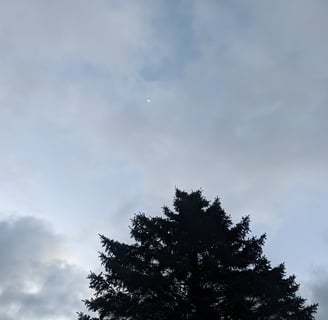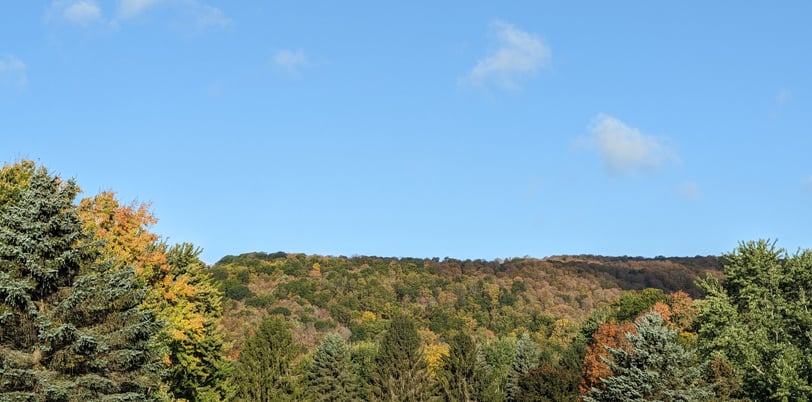Dogs and Drizzle
Day 280, 134-146
Dr. Sunshine
10/9/20233 min read


Sunrise time was a bit gray and rainy, but the day sure did shape up nicely. Mrs. Dr. Sunshine had to ship off early once again for her workshop and while it was a little drier out than yesterday, I skipped the fire because it just didn't seem as much fun without my partner in light absorption.
Anyway, today I will reveal the secret to all your food questions. Even though we talked all about what food to eat, the answer isn't so much what as it is how. As in how you eat it and how you get it. The key concept here is eating seasonally and locally. This also happens to mean eating real food, unless you happen to live near the vast Oreo fields of the midwest.
When we eat, we are not just getting calories, vitamins, and building blocks like protein and fat. The light environment we live in provides information to our bodies on how to operate. It also encodes other animals that we might eat, as well as plants, and we take in that information as well. If there is a mismatch, our bodies get confused over which instructions to follow, and hijinx or disease ensue. If this sounds too wacky, think about an upstate NYer living through the four seasons. In summer, there is lots of light and lots yummy fruits and vegetables to be eaten. That person that may seem very familiar will also be very active with kayaking and hiking (in the old days, this person might have been busy planting and harvesting). Then winter comes, and the fruits and veggies are no longer growing, the work of farming is reduced and there is a natural tendency to hunker down. Eating a ketogenic diet (higher fat) might come naturally as the only thing available to eat is the hunted deer or the livestock that have been raised and fed on stored hay and grass that store very well but are not very digestible by humans. Contrast that with someone living in a tropical environment at the equator where it's always sunny and 70 with plentiful fruits and veggies year-round. Or the NYer that diligently eats all the "superfoods" they read about imported from far flung places year-round. The local seasonality dictates what food is available and what our bodies are capable of receiving.
Another issue with eating locally is deuterium, which I previously wrote about here, here, and here. The short version is that in situations where ion channels and receptors are only one atom wide, a heavy hydrogen or a molecule of water made with it can really gum up the works. Fortunately, light exposure keeps our mitochondria optimized and helps us handle deuterium, but it always helps to avoid it. Properly raised animal sources of food are good at eliminating deuterium, so they tend to not to concentrate it. Plants are also very good at eliminating deuterium, but guess what they do with it? They put it in their fruit, so that it is eventually taken away from them. It's another way the light connection between us and food can either help us or hurt us. Modern food processing from farm to factory to store also tends to concentrate deuterium. In addition to pesticide and other chemical exposures, this might be a big factor in why it is so bad for us.
If that wasn't enough woo-woo for you (paging Dr. Seuss!), here's a little more. The physical and emotional environment you are in when eating will affect how your body utilizes what you are giving it, no matter how "good" or "bad" it is. Digestion is much better when you are sharing a meal with friends and family, particularly if you had a hand in preparing it, vs. cramming down a burger and fries alone in your car after hitting the drive-through. If you must do the latter, stop the car, get out and stand on grass while eating it. It will make a difference. My version of Michael Pollan's quote would go like this: Eat real food, not too much, mostly local and with intention.


As always, this blog is for entertainment purposes only and should not be considered medical advice. Definitely talk to your doctor before eating fast food.